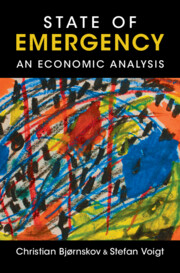Book contents
- State of Emergency
- State of Emergency
- Copyright page
- Contents
- Figures
- Tables
- Acknowledgments
- 1 Introduction
- 2 The Architecture of Emergency Constitutions
- 3 The Determinants of Emergency Constitutions
- 4 Why Do Governments Call a State of Emergency?
- 5 The Effectiveness of Emergency Constitutions after Natural Disasters
- 6 When Does Terror Induce a State of Emergency? And What Are the Effects?
- 7 States of Emergency after Domestic Turmoil
- 8 Dealing with Disaster
- 9 Keeping up the Balance between the Federation and the States
- 10 Constitutionalized Media Freedom during Emergencies
- 11 Unconstitutional States of Emergency
- 12 The COVID-19 Pandemic, States of Emergency, and Reliance on Executive Decrees
- 13 Returning to the Status Quo Ante?
- 14 Contracting for Catastrophe
- 15 The Future of States of Emergency
- References
- Index
14 - Contracting for Catastrophe
Legitimizing Emergency Constitutions by Drawing on Social Contract Theory
Published online by Cambridge University Press: 01 November 2024
- State of Emergency
- State of Emergency
- Copyright page
- Contents
- Figures
- Tables
- Acknowledgments
- 1 Introduction
- 2 The Architecture of Emergency Constitutions
- 3 The Determinants of Emergency Constitutions
- 4 Why Do Governments Call a State of Emergency?
- 5 The Effectiveness of Emergency Constitutions after Natural Disasters
- 6 When Does Terror Induce a State of Emergency? And What Are the Effects?
- 7 States of Emergency after Domestic Turmoil
- 8 Dealing with Disaster
- 9 Keeping up the Balance between the Federation and the States
- 10 Constitutionalized Media Freedom during Emergencies
- 11 Unconstitutional States of Emergency
- 12 The COVID-19 Pandemic, States of Emergency, and Reliance on Executive Decrees
- 13 Returning to the Status Quo Ante?
- 14 Contracting for Catastrophe
- 15 The Future of States of Emergency
- References
- Index
Summary
States of emergency are declared frequently in all parts of the world. Their declaration routinely implies a suspension of basic constitutional rights. In the last half century, it has become the norm for constitutions to contain an explicit “emergency constitution,” that is, the constitutionally safeguarded rules of operation for a state of emergency. This chapter asks whether inclusion of an emergency constitution can be legitimized by drawing on social contract theory, arguing that there are important arguments, both against and in favor of constitutionalized emergency provisions, and that social contract theory – as applied by economists – can be of some help when deciding whether to have, or not to have an emergency constitution.
Keywords
- Type
- Chapter
- Information
- State of EmergencyAn Economic Analysis, pp. 351 - 375Publisher: Cambridge University PressPrint publication year: 2024

